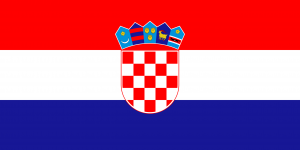Language/Croatian/Culture/Traditions-and-Festivals
Welcome to the lesson on Croatian traditions and festivals! As a Croatian language teacher with 20 years of experience, I believe that learning about a country's culture is crucial to understanding its language. Therefore, in this lesson, we will explore some of the most important Croatian traditions and festivals, including their origins and significance.
Croatian Traditional Music
Croatian traditional music is an important part of the country's cultural heritage. There are different styles of traditional music, depending on the region, but they all share common instruments such as the tamburica, a string instrument, and the kolo, a type of circle dance. Some of the most famous musicians in Croatia have explored traditional music in their work, such as Marko Perkovic Thompson, Miroslav Skoro or Mate Bulic. Some of the most important traditional festivals in Croatia include Kajkavska popevka festival in the north, the Dalmatian chanson festival in Dalmatia, and the Sinjska alka in the town of Sinj, a knight tournament that has status of Intangible Cultural Heritage by UNESCO.
Christmas Traditions in Croatia
Christmas is an important holiday not just in Croatia but in many countries around the world. In Croatia, Christmas is traditionally celebrated with family and friends, and it is a time for exchanging gifts and eating festive meals. One of the most unique Croatian Christmas traditions is the burning of the yule log, which symbolizes the old year coming to an end and the new year beginning. Another tradition is the painting of boiled eggs, which are then used to decorate Christmas trees or given as presents.
Carnival in Croatia
Carnival, also known as "maškare" in Croatian, is a celebration that takes place before the beginning of Lent. It is a time for dressing up in costumes, wearing masks, and participating in street parades. One of the most famous Carnival events in Croatia is in the island of Grohote, where the local custom is to dress up like old ladies and men, making fun of their own age, and perform comedic skits. The tradition has its origins from the austrian occupation in the 19th century, when masks were adapted to make fun of the authority figures.
Easter Traditions in Croatia
Easter is another important holiday in Croatia, and there are many unique Croatian Easter traditions. One of them is the "cukanje" which literally means "bumping". It consists of young boys getting buckets of water and splashing water on their female teenage neighbours as a sign of good luck for the upcoming season of fertility. Easter eggs are another important symbol of Easter in Croatia, and they are often painted or decorated in traditional patterns.
Folk Festivals in Croatia
Croatia has many folk festivals throughout the year, and they are a great way to experience Croatian traditions and culture. One of the most popular festivals is the Đakovački vezovi which gathers thousands of folk dance and music enthusiasts from all over Croatia and the neighboring countries. Other well-known festivals include the folklore festival in Zagreb, the festival of traditional music and dance in Omiš and the international folk festival in Crikvenica.
Conclusion
Learning about Croatian traditions and festivals is an enriching experience that can help you understand more about the culture and the country. In this lesson, we have covered some of the most important festivals and traditions, including Christmas, Carnival, Easter and folk festivals, and even traditional music. So, next time you visit Croatia, make sure to take part in these celebrations and immerse yourself in Croatian culture!
Sources
Related Lessons
- Education and Intellectual Life
- Sports and Recreation in Croatia
- Arts and Entertainment
- Religion and Spirituality in Croatia
- History and Geography
- Contemporary Croatian Culture Scene
- Daily Life and Customs
- Croatian Society and Politics
- Croatia Timeline

